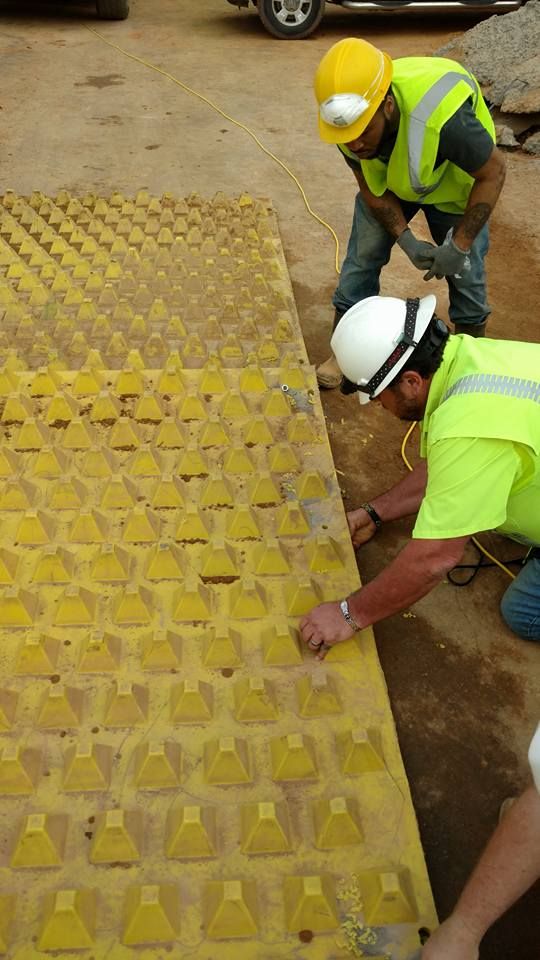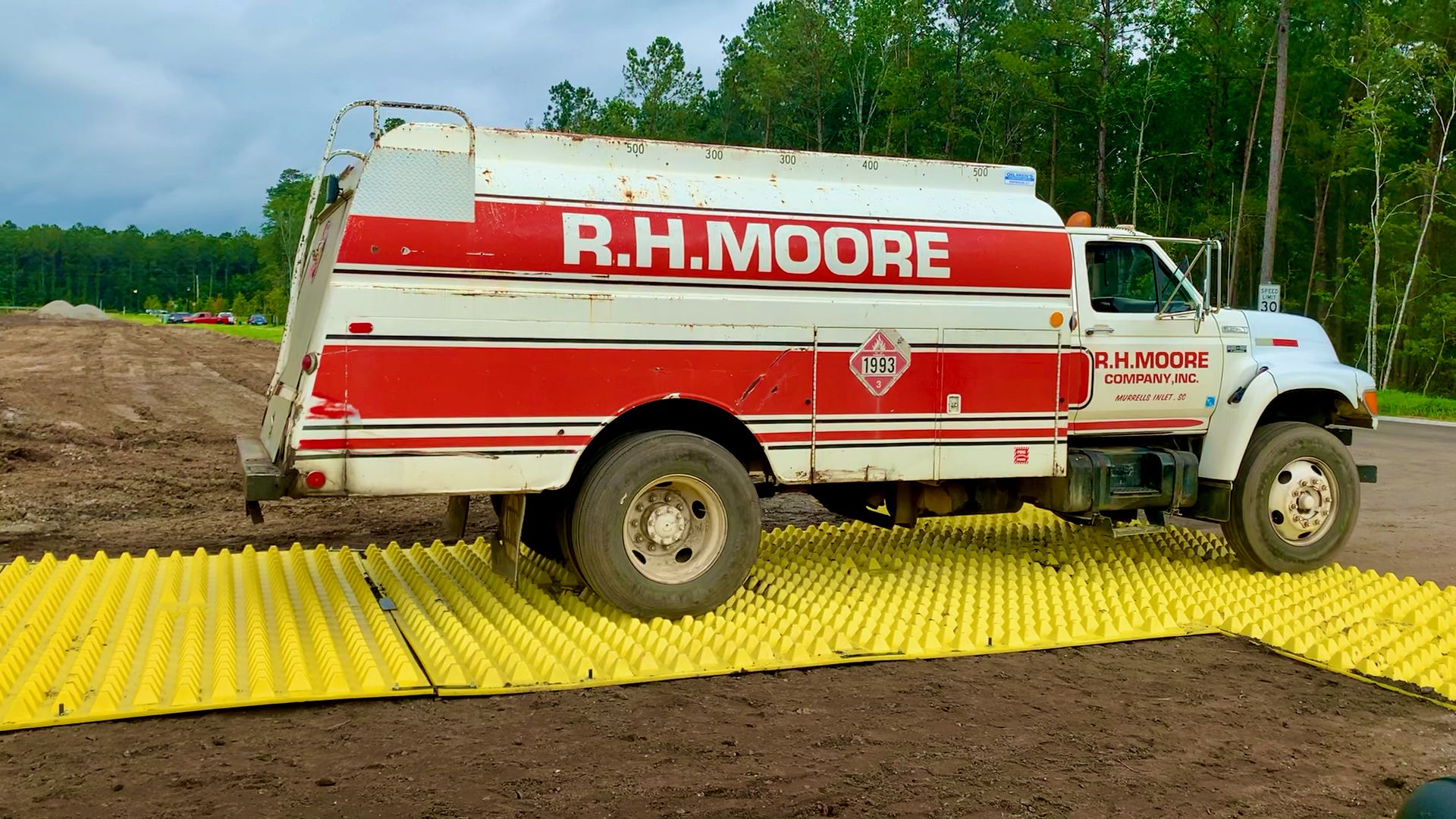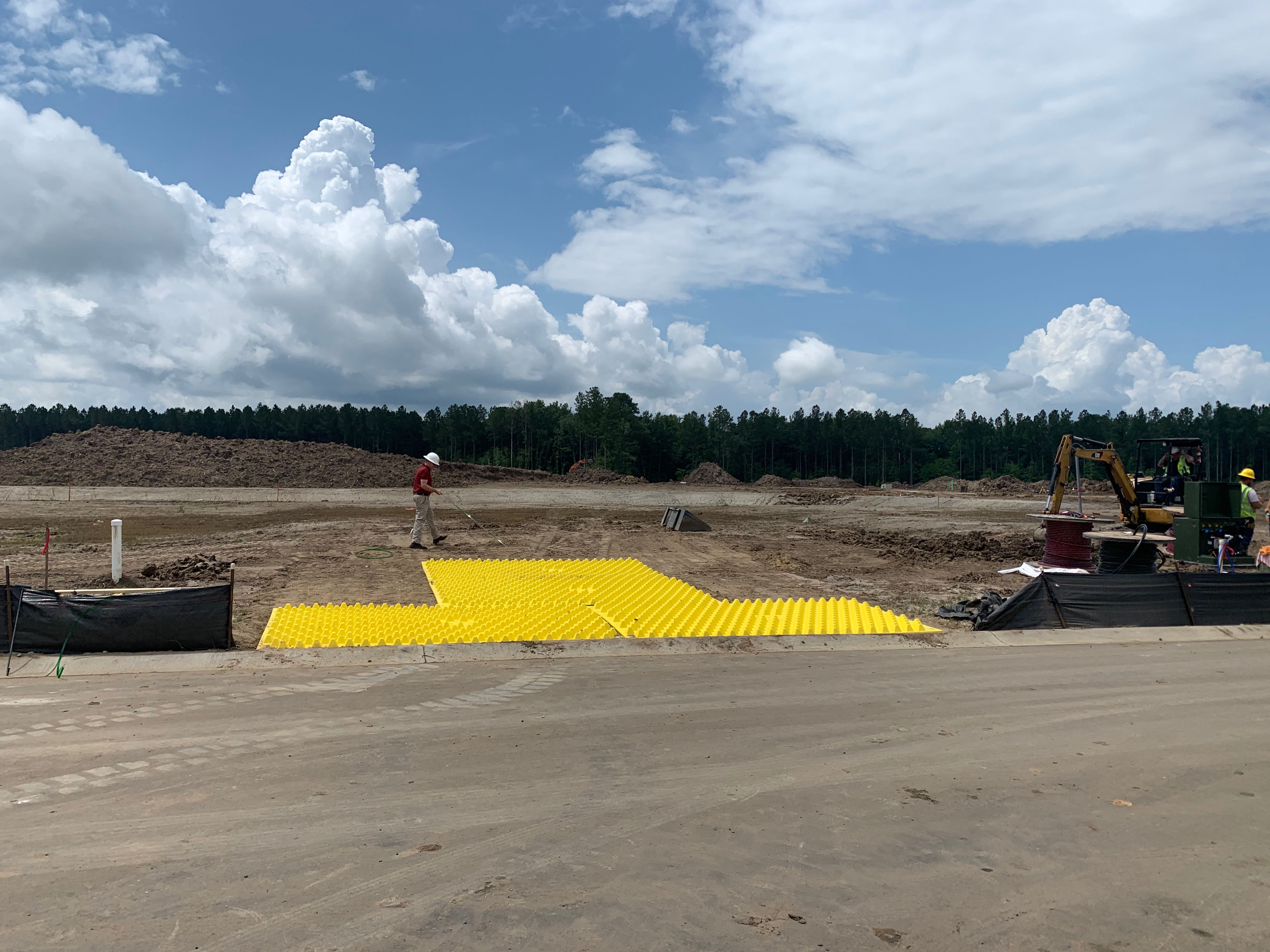South Carolina
South Carolina Stabilized Construction Entrance
Located on the eastern shore, South Carolina is home to rich water resources, including rivers, marshlands, and over 180 miles of coastline. To protect the surface waters, the South Carolina Department of Health and Environmental Control (DHEC) administers the NPDES Program under the Clean Water Act. The DHEC website guides contractors as they prepare their permit application, offering resources such as the Best Management Practices (BMP) Handbook, design aids, and technical documents.
To obtain a stormwater permit, contractors must submit a stormwater application, a Storm Water Pollution Prevention Plan (SWPPP), and a Notice of Intent (NOI) before commencing construction. DHEC reviews the SWPPP, and feedback may be provided regarding the BMPs chosen to mitigate pollution associated with the project. The SWPPP serves as a guideline for the contractor and subcontractors to ensure compliance with stormwater regulations.

South Carolina NPDES Construction Stormwater General Permit
The Construction General Permit (SCR100000) applies to any project disturbing 1 or more acre (or part of a larger common plan) and lays out required BMPs and controls. Additionally, contractors can use a simplified SWPPP template, which does not require completion by a qualified professional. Projects covered by the CGP must submit a SWPPP and associated documentation (site plans, pollution-control plans, BMPs etc.) as part of the application, regardless of exact size, if they meet the permit threshold. SWPPPs specify which BMPs and strategies will be used to contain sediment and erosion pollution.
Many BMPs are listed in the SC DHEC BMP Field Manual.
South Carolina Coastal Zone Requirements
In South Carolina’s eight coastal counties, Charleston, Berkeley, Dorchester, Georgetown, Horry, Jasper, Beaufort, and Colleton, additional coastal‐management requirements may apply depending on where the project is located. Projects that involve work within state-defined “critical areas,” such as tidelands, coastal wetlands, and beach/dune systems, must obtain authorization through the state’s Critical Area Permit program administered by the Bureau of Coastal Management (BCM). For projects that do not impact critical areas directly but will discharge stormwater to coastal waters, a Coastal Zone Consistency (CZC) review or certification is often required to ensure the project complies with the South Carolina Coastal Management Program.
Read more about Critical Area Permitting.

S.C. DHEC BMP Stabilized Construction Entrance
One BMP that is installed before site work is a stabilized construction entrance at each point of vehicular ingress and egress, typically adjacent to a roadway or parking lot. A traditional stabilized construction entrance is a temporary stone-stabilized pad located at all points of vehicular ingress and egress on a construction site, designed to reduce the amount of sediment and debris transported onto public roads by motor vehicles, equipment, and runoff. Construction entrances provide an area where mud, dirt, and rocks are removed from vehicle tires before entering a public road.
Rock Construction Entrance
A traditional rock-stabilized construction entrance or rock vehicle tracking pad consists of a 6-inch-thick layer of D50 aggregate (2 to 3 inches) installed over a permeable non-woven geotextile fabric. Rock entrances are installed 24 ft wide x 100 ft long (15 ft wide x 20 ft long for smaller projects). The entrance must have tapered edges to provide a wide radius as vehicles turn onto the roadway. In addition to the rock, a basin must be established to ensure runoff does not leave the job site.
The entrances must be inspected every week to ensure necessary repairs are completed. Additional inspections must be completed during wet seasons, and within 24 hours after each rainfall event (1/2 inch).
As sediment builds up in the aggregate, regular maintenance is necessary to ensure optimal performance. Maintenance includes immediately sweeping the road when there are rocks, sediment, or debris on the roadway, washing or replacing the aggregate, and reshaping the entrance. Additionally, any damaged paved roads must be repaired immediately. Contractors must be sure that sediment is cleaned off the roadways before it is washed down a storm drain.
Additional everyday situations that require maintenance are listed in the SC HDEC Field Guide.
In heavy-use situations or during wet weather, construction access points often require frequent maintenance to remain effective. The SC DHEC Guide recommends considering alternative methods when traditional entrances become challenging to maintain. One option referenced in the SC DOT Standard Specifications is the use of a wash rack with an integrated sediment trap, which uses pressurized water to remove sediment from vehicle tires before they leave the site. Although effective, wash racks can be costly to install and operate. Other viable alternatives include the FODS Reusable Construction Entrance System, shaker racks, and wheel washer or wash-rack solutions, all of which offer different approaches to managing sediment trackout at challenging sites.
FODS Reusable Construction Entrance
The FODS Reusable Construction Entrance System provides a practical, durable, and portable solution to construction entrances. The system can be easily installed over any substrate, including dirt, concrete, and asphalt.
The Trackout Control Mats are formed into a pattern of pyramids, which deform vehicle tires as they drive across. As the tires flex, the trapped sediment and debris become dislodged from the tire treads and fall to the base of the pyramids. Because tires only reach down 1/4 inch from the tops of the pyramids, they will not come into contact with the sediment that collects at the base of the mats.
FODS Trackout Control Mats are highly effective at minimizing sediment and debris from tracking onto the road. Independent testing done in a high-traffic-volume land development setting showed a 59% reduction in street sweeping after switching from rock to FODS construction entrance.
Because FODS is a rockless system, contractors can reduce the risk of rocks becoming lodged in dual-tire vehicles or large vehicle treads. The mats are highly durable, and each mat can support over a million pounds. FODS are designed to be cleaned using a FODS shovel or skid steer with a broom attachment.
Compared to traditional techniques, FODS allows contractors to easily install and relocate their entrance, quickly clean the mats to ensure continued performance, and save costs on each project. The standard layout is a 1x5T, which provides 35' of travel and a wide turning radius. This layout is commonly used as a replacement for a 70-foot rock-stabilized construction entrance.

